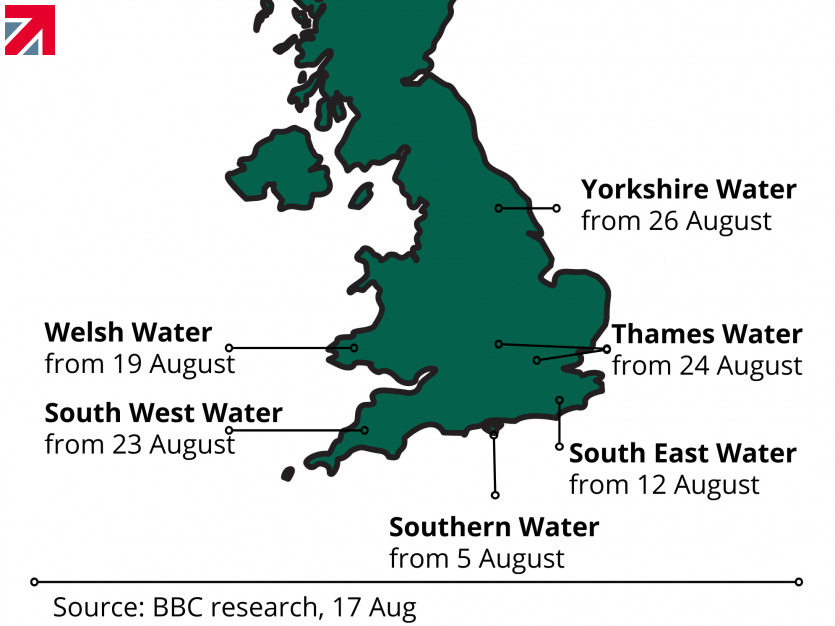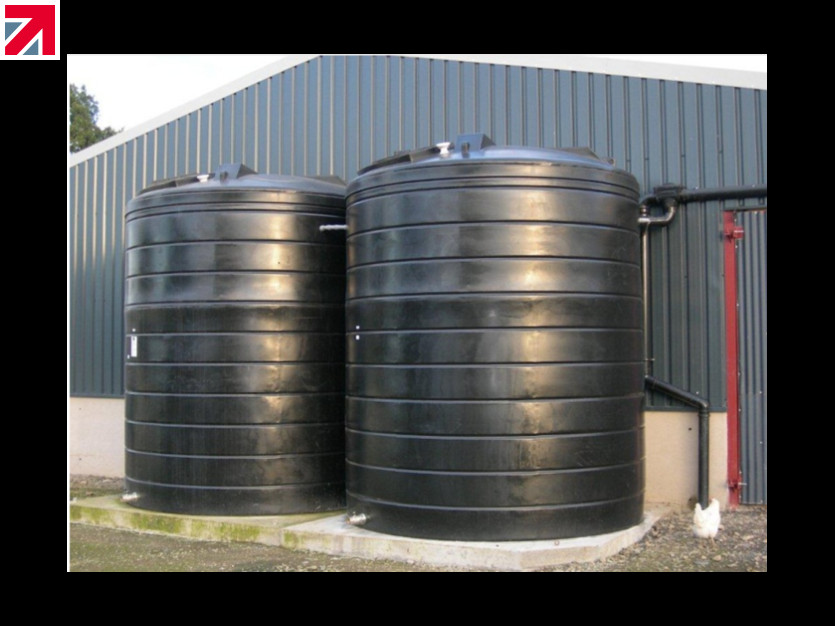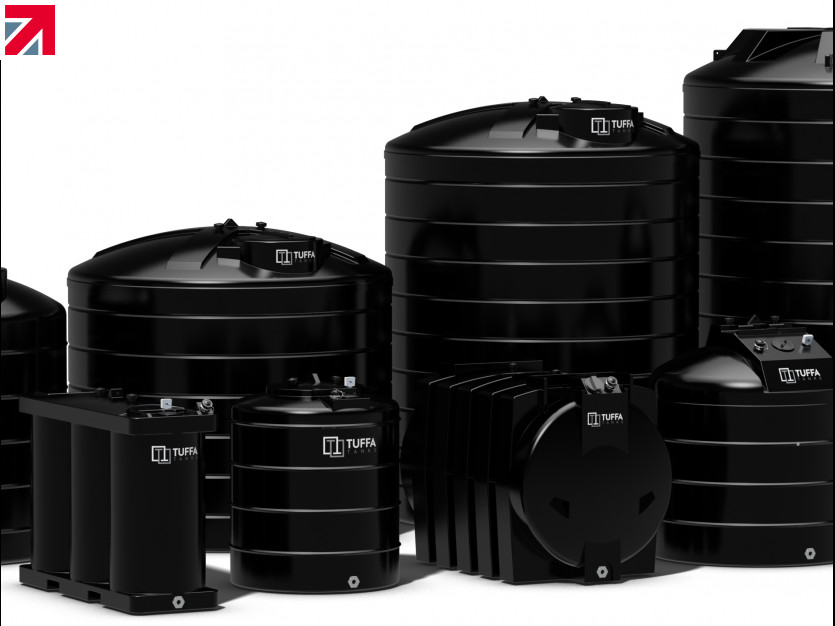After the driest July in England on record since 1935 (and the driest on record for East Anglia, the southeast and southern England) reservoirs and rivers have reached critically low levels. The typical UK government response to low water levels is to implement a hosepipe ban in the worse affected areas. According to Water UK, this usually reduced water usage by about 10%. As a result of five months of consecutively lower than average rainfall, hosepipe bans have been announced by 6 water companies in areas throughout Wales, the south and southeast of England, and Yorkshire.
Drought and agriculture
Restrictions on much water farmers can take from rivers and groundwater sources coupled with low moisture levels in soil have also threatened crop yields. Water usage in agriculture is higher than in any other industry and many farms rely on alternative water sources such as boreholes, rivers, streams and springs to reduce reliance on mains water. Richard Walker, Managing Director of supermarket Iceland, expressed concerns that a lack of rainwater “alongside no Ukrainian harvest and general inflation throughout the supply chain” will impact on food supplies and could contribute to the cost-of-living crisis.
Trends in rainwater harvesting
Hot summers and droughts are expected to become increasingly common. UKCP18 (the latest generation of climate projections for the UK) predict a trend toward drier summers in the future, with the southern parts of England facing more severe water scarcity. Historically rainwater harvesting uptake has been slow within the UK compared with other European countries, namely Germany. Outside of Europe building planning approval can be subject to having a rainwater harvesting system designed into the build such as commercial buildings in New Mexico or buildings in areas of Australia. With water scarcity becoming a real issue, the UK is now seeing a move towards domestic and commercial properties installing rainwater harvesting systems into new builds or retrofitting buildings to capture rainwater.
Rainwater harvesting uptake in the UK
The increased uptake in rainwater harvesting has been driven by increasing water prices, periods of drought and farming grants aimed at decreasing flood risk and diffusing water pollution from rainwater run-off. Since the droughts of July and the application window opening for Severn Trent’s Environmental Protection Scheme (which match funds projects including rainwater harvesting), we’ve seen a surge in enquiries for our water tanks from homeowners, farmers and companies looking to store or harvest rainwater for a range of uses including feeding crops, process water use and professional car washing.
Benefits of rainwater harvesting
While periods of drought and government incentives are increasing rainwater harvesting uptake, there are also numerous benefits of rainwater harvesting due to the water’s properties. These include:
- Financial – a reduction in mains water usage can decrease water bills for companies, farms and households. Around 50% of household usage (175L per day) is for greywater usage (flushing toilets, washing clothes or cars and watering the garden) which can be supplied by rainwater harvesting without further treatment.
- Water quality – salts, minerals and chemicals are used to treat mains water. This removes nutrients and properties of rainwater which are beneficial for uses such as horticulture, washing, and manufacturing or processing where filtered water is required e.g. for microchip production or photographic processing.
- Environmental – scientists predict that extreme weather will become more common in the UK leading to both periods of drought and flooding. Capturing rainwater alleviates the effects of both and reduces our carbon footprint (by 0.3 grams per litre) and our reliance on rivers, streams and reservoirs.
Tuffa manufacture plastic water tanks in capacities from 1350L to 20000L. Our above-ground water tanks offer simple installation when compared to underground tanks or attic systems and have benefits including:
- Premium UV stabilised and corrosion resistant compound polymer that resists colour fade
- Higher than average polymer shot weight creates a thick and durable tank wall
- The rotomoulding process creates a tank wall without joints and seams that can create weak areas
- Available with a range of rainwater harvesting equipment including diverter kits, rainwater filters (for roof sizes up to 800m2 per unit) and water pumps with the option of mains water backup
- Interlinking to achieve higher capacities
- Simple installation and retrofitting to existing buildings
- Cost-effective compared to steel tanks with shorter lead times
- 10 year guarantee when registered
For advice on rainwater harvesting projects and help determining the right rainwater tanks you can contact our team today.
Find out more about Tuffa Tanks on their member profile page here
Member-created content 3 years ago | From members


